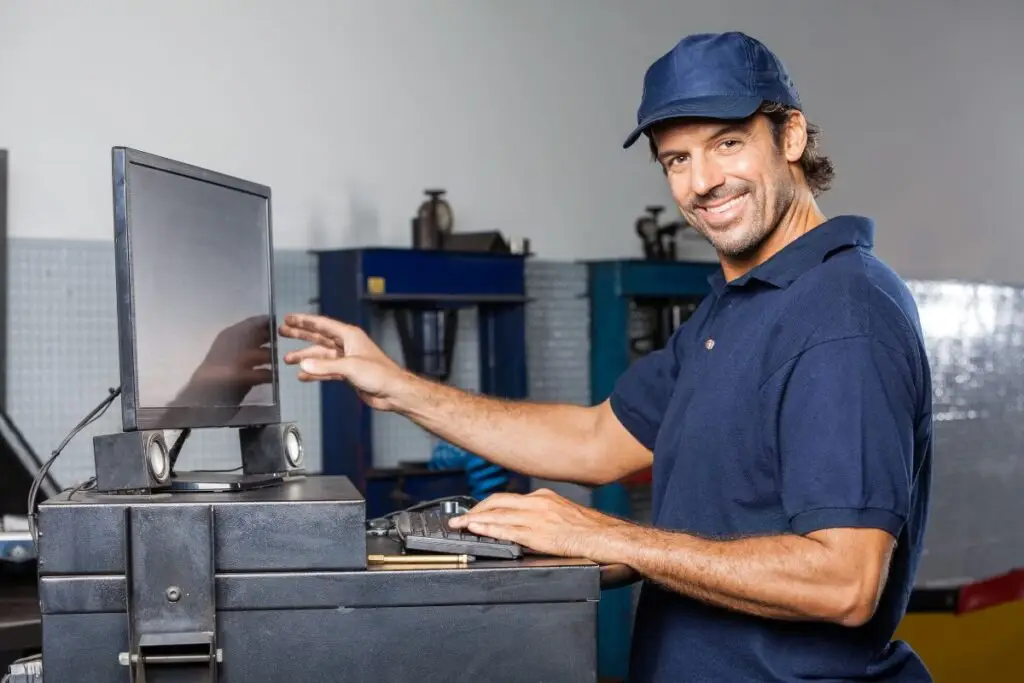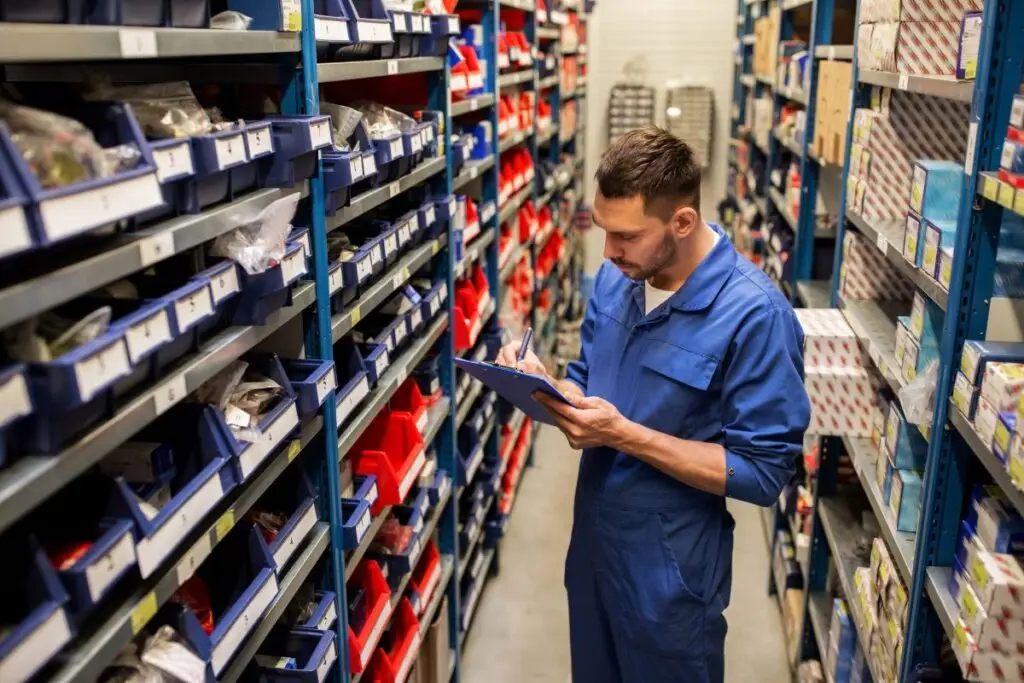Do the right things for the right reasons and receive the rewards.
by Murray Voth, RPM Training
Six minutes, one tenth of an hour. We have been measuring time in the automotive world by tenths of an hour for decades. Our labour guides, estimating tools, billing practices, and some payroll practices all depend on this unit of time. As familiar as this concept may be to a lot of shop owners, there is a related number that many in this industry are not aware of. That number is “sold hours per invoice.” This is an important number to be able to measure in your business.
In my last article, I wrote about forecasting for a net profit. In the sample numbers, we started with a shop producing 1.1 sold labour hours per invoice. By implementing changes that allowed them to collect 1.5 sold hours per invoice, it put $73,000 on their annual bottom line. For future reference, the industry benchmark is 3.0 sold labour hours per invoice.
What are the changes that we need to implement in our shops to affect sold hours per invoice? First, we need to identify our labour leaks, and second, we need to identify and offer our clients legitimate repairs and maintenance that we currently do not offer (or do not have time for).
First, let’s identify labour leaks. How many inspections do we perform for free? How much diagnosis do we not charge for? And how many times does it take us longer than we quoted to repair a vehicle because of age, rust, and condition?
Many of us do not charge for this extra time because we have already given an estimate, and we do not want to be perceived as dishonest. These scenarios, along with being activity-based shops, prevent us from earning the profits we need. Imagine a technician working on 10 cars a day and calculate all the time taken to drive all of those cars in and out of the bays, time that is probably not getting billed out.
Why do so many shops still think that they have to do inspections for free just to get the work? Brake inspection is the first example that comes to mind. Some shops inspect the brakes for free, and some charge for the inspection but credit it back if the customer gets the work done. Other leading shops charge for a complete brake system evaluation performed by a qualified professional technician and get paid for it, and believe it or not, their clients see the value of the service.
"Why do so many shops still think that they have to do inspections for free just to get the work?"
Before I proceed with this brake inspection discussion, let me ask you a question. How many times a week in your shop do you inspect the brakes on a vehicle, sell the brake job, and halfway through the job the technician comes back to you saying he now needs calipers, or the brake lines have rotted through, or the wheel cylinders are leaking? Now you have to phone the customer back to increase the estimate. That was not a brake inspection, that was a fishing expedition!

If technicians perform a proper inspection of the whole braking system and report accurately what is needed, the whole shop is going to appear more professional and honest. Customers would much rather pay up front for an accurate report of the condition of their brakes and receive an exact estimate of the total price for the job than to be surprised with expensive updates throughout the day. Now, add up all the brake, cooling system, and suspension inspections that you do not charge for in a month, and then take the time that you have spent on those and multiply it by your labour rate to see the money that you are leaving on the table. You may not need to raise your labour rate; you just need to charge properly for what you do.
Let’s discuss the challenge of charging for diagnosis. When was the last time you stuck a screwdriver in your ear and leaned up against a valve cover gasket to diagnose a stuck valve? We now have little black boxes that magically tell us everything that is wrong with the customer’s car (well actually some are yellow, blue, red, or another color). Even though we have invested tens of thousands of dollars in diagnostic equipment and information, we have decided that it is worthless. On top of that, we have trained our customers to think that diagnosis is cheap or free. “Sure,” we tell them. “Drop it off and we’ll check it out.”

"There are many shops that have figure this out and are receiving the rewards. We need to do the right things for the right reasons, one tenth of an hour at a time."
To overcome this misconception, we need to understand how valuable our diagnostic capabilities are ourselves. We would never let anyone take parts off our shelves; however, we let them take our time all day long. If you showed a customer in layman’s terms the series of tests, the various processes and all the data you need to deal with during the diagnostic process, they would have a greater understanding of the value of what you do and be more willing to pay for it. Right now, many technicians are not diagnosing. They are pulling the trouble codes and then guessing what is wrong. It is no wonder the consumer sees little value in paying for diagnosis.
How do we deal with the jobs that take longer than we quoted because of rust, broken bolts, or other unexpected surprises? First of all, the optimism in the industry always amazes me. Today is the day that the studs on the Ford exhaust manifolds are not going to break, or at least that is how we quote out the job. Then they break, and we either call the customer back for more money, or we eat the time. Either way, we are not demonstrating a professional process.
There are not too many jobs that a shop has not seen enough times to know the challenges ahead of time before creating an estimate. Is it because of the time guides? Who said they were the law? It is your business—you need to decide what you need to charge to be profitable, and then make sure you communicate the value of what you need to do to the client. Our technicians need to be given the freedom and responsibility to inform the service advisors of any additional time needed for a job after they have performed an inspection or diagnosis and before the estimate is completed.
As you can see, charging for inspections and diagnosis, and estimating properly, can add labour hours to a work order. As you bill out for this time, your profits will increase. You may have noticed that in each case, it takes time to inform and educate our clients about these processes and the value they represent. “Where am I going to find the time?” you may ask. To put it bluntly, you need more support staff. Having a service advisor to technician ratio of 1:1.5 will give you the time to work with your clients. By the way, you pay for them from some of the additional profits you earn on the additional labour.
Secondly, yes, a page later, and I finally reach my second point, which is the opportunity to sell maintenance and repair services that we currently do not offer our customers, or do not have the time to perform. Many folks in our industry talk about how car repairs are such a grudge purchase. Vehicles break down at unexpected and inconvenient moments; this costs money that our customers did not plan on spending. This comes from the philosophy of only fixing what is broken. Somehow there is pride on the part of some automotive shop owners and technicians that they only fix what is broken. They don’t realize how they are actually costing the consumer more money and causing more stress.
One of the most effective ways of looking after a vehicle and a client well are inspections, and digital inspection are the most effective.
The average aftermarket shop in Canada is averaging roughly 250 work orders a month. I believe that at least 10% of each of these vehicles will need one of the following services or repairs:
- 25 need a battery
- 25 need a cabin air filter
- 25 need an engine air filter
- 25 need a serpentine belt
- 25 need wiper blades
- 25 have a burnt-out light bulb
- 25 need a brake service
And on and on ………………
Do you see how vehicle maintenance and repair can become less of a grudge purchase?
By being automotive maintenance professionals, we can show our clients that we have their best interests at heart. When they sense that our passion is to keep cars from breaking down, that seeing their car being towed breaks our heart, and that keeping them from needing to replace a vehicle and having large monthly car payments brings us joy, they will flock to our shop. Any shop that does this well will have no lack of clients; in fact, your competition will not have a chance. This is a complete mindset change for this industry. There are many shops that have figure this out and are receiving the rewards. We need to do the right things for the right reasons, one tenth of an hour at a time. ■
Get a discount
RPM Training offers a special discount on training courses for ARA members. Visit the ARA’s Preferred Supplier website to take advantage of this offer.

Murray Voth spent 20 years owning and operating service stations with repair bays. During that time, he took a lot of training and participated in a 20-group process for 13 years. He also provided dealer development training for several large oil companies. From 2006 to 2018, Murray was head trainer and coach for a large Canadian automotive aftermarket training company. In 2018 he formed RPM Training and launched RPM Mastermind Groups and his Service Management and Results Training (SMART) course. In March 2020, Murray switched gears and took all his training, groups, and coaching online. Currently, business is growing faster than ever due to all the challenges industry is facing at this time. RPM Training is now offering the three-day SMART course live, in-person, and online.
